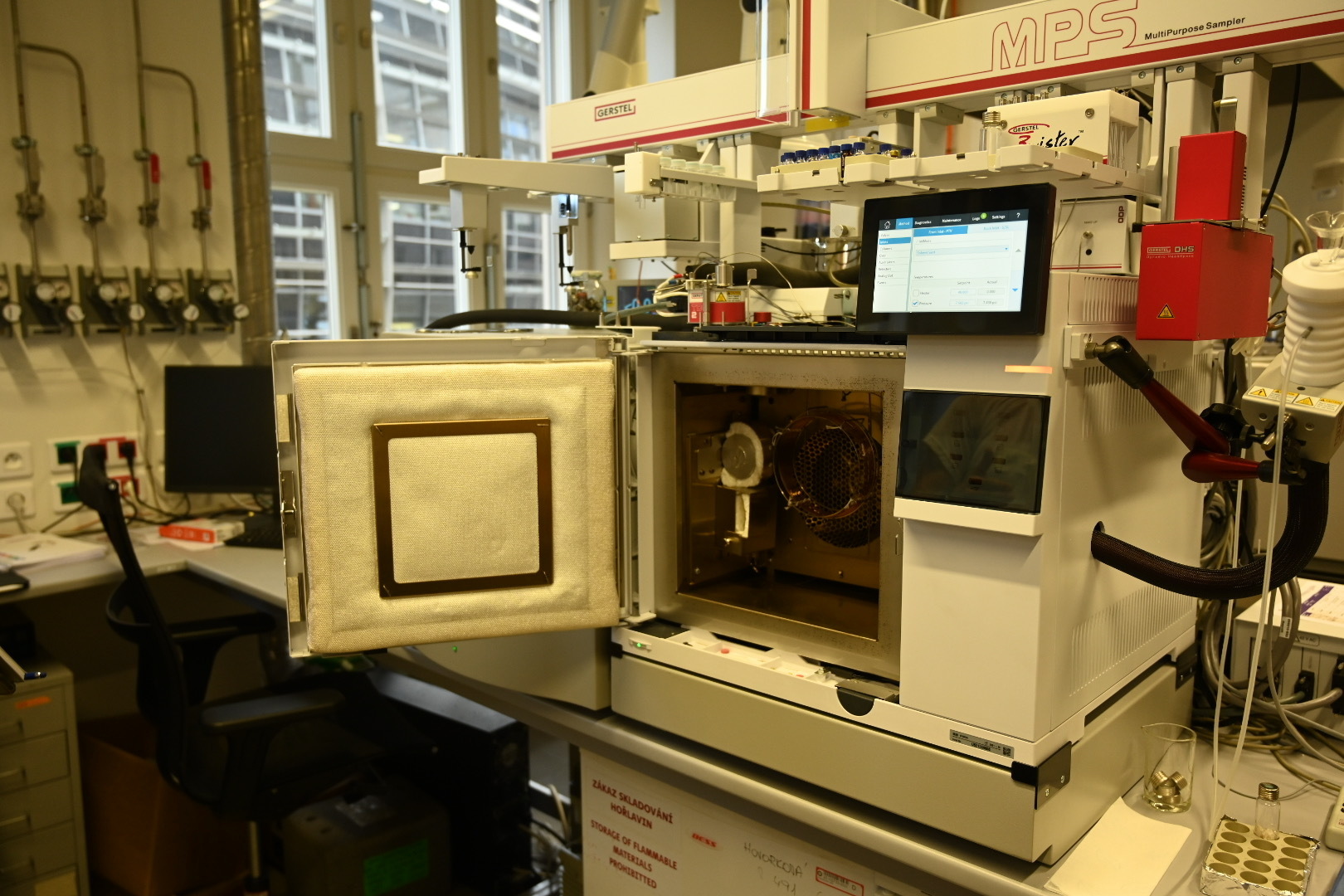PhD Training Day
The PhD Training Day held at the Institute of Organic Chemistry and Biochemistry (IOCB) in Prague on October 25th to 26th was a significant stride in advancing the scientific and analytical prowess of SMELLODI project’s PhD students.
The delegation of PhD students was warmly received at IOCB by Dr. Robert Hanus, Dr. Pavlína Kyjakova and Natan Horáček. The following two-day workshop was structured to provide hands-on experience in cutting-edge analytical techniques, with a particular focus on GC-MS. After a short welcome introduction round, the group of 10 early career researchers (master students, PhD students and early Post-Docs) was introduced into the laboratory facilities at IOCB.
Laboratory-Tour
During the tour, the student group received a detailed explanation of various instruments and machines used for the chemical analysis of body odor samples. The essence of gas chromatography (GC) lies in its exceptional capability to separate and analyze volatile compounds within mixtures. This analytical technique is grounded on the principle of differential partitioning, where compounds are distributed between a stationary phase and a mobile phase, typically a carrier gas. The primary objective of GC is to unravel mixtures into their individual components, thereby enabling both quantitative and qualitative analysis.
At IOCB, both one-dimensional (1D-GC) and two-dimensional (2D-GC) gas chromatography systems are operating. In 1D-GC, a single column is used for separation, while 2D-GC employs two columns in series, offering higher resolution and enhanced separation power, making it to the preferred system for the analysis of complex samples like human sweat.
GC, in its operational capacity, is complemented by mass spectrometry (MS), a crucial technique for identifying and quantifying compounds based on their mass-to-charge ratios. This technique enhances the analytical capabilities of GC, extending the scope of analytical methodologies.
To gain a true hands-on understanding, the body odor donation procedure as conducted in WP2 and WP5 was replicated. Six volunteers donated sweat samples collected from cotton pads worn at the axillar regions. These samples were stored on dry ice and then prepared for the GC-MS analysis by the workshop attendees. The cut snippets were placed in a glass tube, and a special fiber was exposed to absorb volatile organic compounds. After 25-30min, the fiber was transferred to the GC device for analysis. Each student had the opportunity to prepare and conduct the measurement steps for GC.
Scientific exchange
During the interim periods of sample analysis, the workshop featured scientific presentations by the attendees. Antonie Bierling from FSU-PSY started by elucidating the principles of (healthy) body odor perception and its implications in social chemosignaling. Dr. Nicole Power from TUD-UKD introduced her research on body odor in diseased states, showcasing the Sniffin Sticks test battery, a tool for objective olfactory performance assessment. This session included hands-on testing, allowing participants to experience the methodology first-hand. Laura Ekkawi, a master student from FSU-PSY, further delved into the nuances of body odor perception within the context of mental health disorders. Additional presentations from IOCB students offered insights into their respective research endeavours, e.g., in the usage of body odor tracing in forensic applications and the detection of criminals.
Data Analysis using R
On the second day, the workshop focused on data analysis, examining mass spectra to unveil distinct chemical profiles. Using the statistical software R, participants learned to analyse mass spectra from the previous day’s samples, collected from both left and right axillary regions of each donor. This analysis revealed unique ‚chemical fingerprints‘ and the relative ‚chemical distance‘ among participants, as well as between men and women.
Conclusion
In summary, the workshop served as a valuable platform for scientific development, enriching the knowledge and skills of participating PhD students in advanced analytical techniques and fostering a collaborative research environment. The successful blend of theoretical understanding, practical application, and interdisciplinary presentations marked the workshop as a resounding success.










